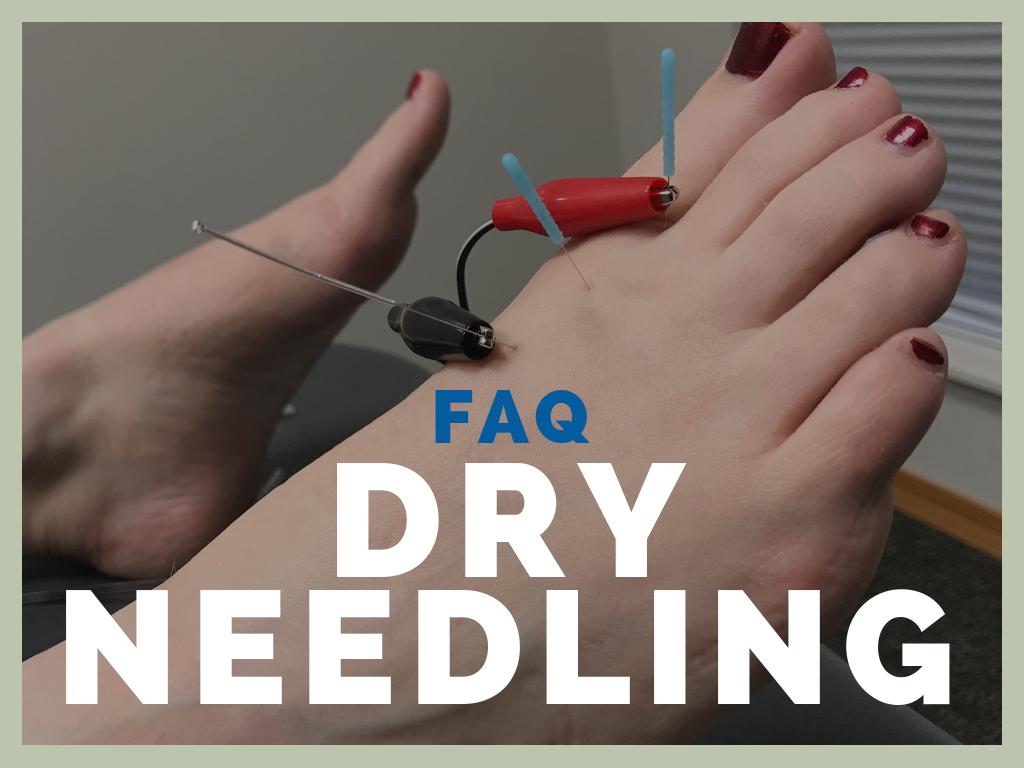FAQ: Dry Needling
What is Dry Needling Therapy?
Dry needling involves inserting a thin, filament needle into a pain point, known as a trigger point, to release tension and promote healing. Trigger points are often thought of as knots in a muscle.
How does Dry Needling work?
There are several in-detailed reasons how dry needling works and the associated ways to Dry Needle for each reason. Overall, Dry Needling works by releasing tension in the body on a local and neural level. On a local level, it breaks up the knot. On a neural level, it turns off pain receptors in the brain and pain receptors in the spine. (Read More)
Is Dry Needling painful?
Dry Needling is mostly painless. When a needle hits a trigger point, it may feel like:
- A deep ache
- An electric-like shock
- Reproduction of the pain pattern
Does my medical doctor need to prescribe Dry Needling Therapy?
No, our chiropractors can Dry Needle without a prescription.
Are there risks to Dry Needling?
Potential adverse risks that people should be aware of include:
- punctured lung
- vasovagal response – feeling lightheaded or flushed
- muscle soreness
- fatigue
- bruising
- pain during insertion
- fainting – typically occurs in individuals who have had past issues with needles (i.e. giving blood)
Who should not try Dry Needling?
Individuals who should not try Dry Needling or beware of Dry Needling include someone who:
- denies consent
- has a high level of fear/apprehension
- has a bleeding disorders or is on anti-coagulants
- is pregnant
- has an infection/illness
- has an unstable bone injury
- has a malignant tumor
- has a pacemaker
- has breast implants or around other implants
- has a joint replacement
Some of these listed are relative-contraindications, not absolute. Ask our chiropractors if you have questions or concerns with any of these.
Does Dry Needling work by itself?
Dry Needling can be a stand alone service. A treatment plan all depends on how many different pain mechanisms you have going on. However, Dry Needling is much more effective if coupled with pain reduction exercises/stretches and hands on techniques such as A.R.T. or massage.
What is the success rate with Dry Needling?
Success rate with Dry Needling is incredibly varied. Factors that determine success rate include:
- style of Dry Needling
- area being Dry Needled
- patient's potential healing rate and combined services.
Typically, most individuals see results within 2-3 weeks, if not the first session, with treatment being no more than twice a week. This also depends on how many different pain mechanisms are occurring.
How is Dry Needling used to treat athletic injuries?
Dry Needling is used to release trigger points in an area which are limiting strength, movement, and stability. Sometimes, the tension being held in the body is deeper than what a chiropractor, physcial therapist, or massage therapist can get to with their hands. Dry Needling allows us to get to this depth without increasing damage and inflammation. This allows an athlete to return to his or her sport faster, which is always the goal.
About the author
Dr. Keith Sparks is an award-winning chiropractor, functional medicine expert, and the co-founder of ICT Muscle & Joint Clinic. Dr. Sparks’ emphasis of care originated within the fields of rehabilitation, soft-tissue therapies, and chiropractic. To date, he has brought this unique combination of skills into union with functional medicine. The sole purpose of intertwining these distinct skills, knowledge, and services is to provide incomparable care to his local community. Dr. Keith Sparks is often seen in the Wichita, KS community speaking at business events and teaching health and performance classes.
